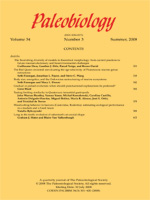The three dimensional structure of vegetation is an important component of ecosystems, yet it is difficult to reconstruct from the fossil record. Forests or woodlands prevailed at mid-latitudes in North America during the early Eocene but tree spacing and canopy structure are uncertain. Here we use stable carbon isotope values (δ13C ) in early Eocene mammalian faunas to infer canopy structure. We compare δ13C values in two diverse fossil assemblages from the central Bighorn Basin to values predicted for mammals in a variety of open and closed habitats, based on modern floras and faunas. We conclude that these early Eocene faunas occupied an open canopy forest. We also use carbon and oxygen isotopes to infer diet and microhabitat. Three higher level taxa have significantly different mean δ13C values, and values are negatively correlated with body mass. The pattern suggests diets high in leaves for larger mammals, and fruit or other non-foliar plant organs for small ones. A preference in the larger mammals for wetter habitats with high water availability to plants may also have contributed to the pattern.
How to translate text using browser tools
1 March 2008
Stable isotopes in early Eocene mammals as indicators of forest canopy structure and resource partitioning
Ross Secord,
Scott L. Wing,
Amy Chew
ACCESS THE FULL ARTICLE
<
Previous Article
|

Paleobiology
Vol. 34 • No. 2
March 2008
Vol. 34 • No. 2
March 2008




